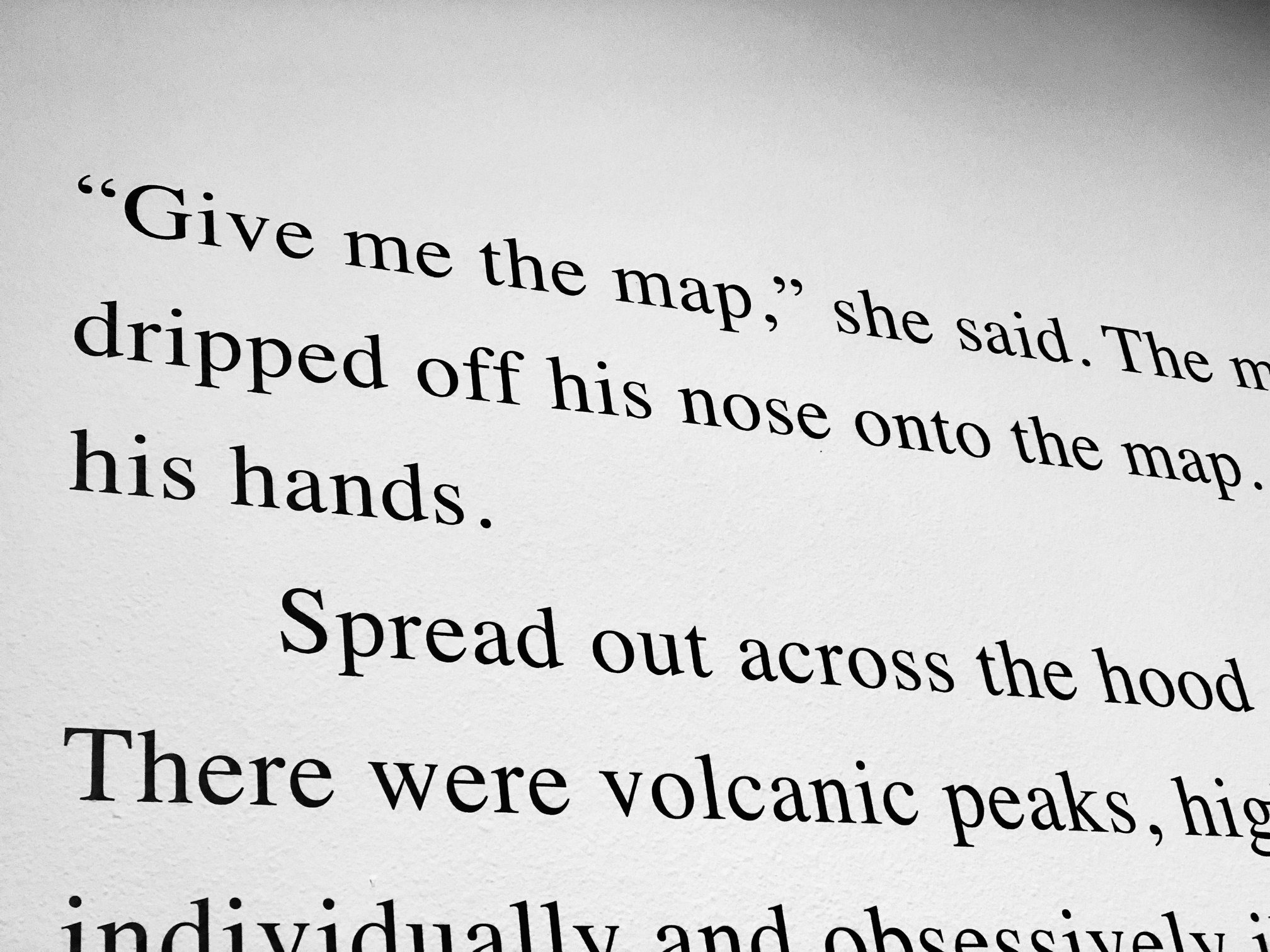This installation is one of around 80 short stories written by Vernon Fisher. The story, titled The Map, starts with a demand and a take-over from a woman to a man, who has lost his power of reason, and ends with a void that reason can’t fill. A couple is stopped in a desert. Something is so wrong that the man sits in the sand, clutches his knees, and rocks back and forth. The woman looks at a map and seems to become distracted and even wryly amused by the extravagant and useless information there, until she guesses where they might be and discovers there is nothing there for help.

Vernon Fisher communicates an overall feeling in each of his works. From this one, I’m tempted to feel horror, but “The Map” is not so much about a couple mortally lost in the desert but about its namesake, the map. This map is absurdly and impossibly filled with everything from celebrity profiles to illustrated dunes. It represents our tendency to be in our minds, ignoring or distrustful of reality (what we see, hear, touch, taste) and beauty, relatedness, and mystery. This piece jolts me out of the workings of my mind in the realm of ideas and into the here and now, appreciating the tangible people and places around me.

Vernon Fisher, “The Map (transcription),” 2016-2019, vinyl lettering on the wall, 12 x 16 feet.
“Give me the map,” she said. The man had collapsed to a sitting position on the sand. Sweat dripped off his nose onto the map. “Give it to me before you mess it up.” She tore the map from his hands.
Spread out across the hood of the truck, the map was a snarl of clotted lines and text. There were volcanic peaks, highland deserts, depressed deserts, rugged parabolic dunes, all individually and obsessively illustrated. Dozens of colors for land elevations. Different colors for zones of precipitation (not much), zones of arable land (even less), zones for extremes of temperature. She looked out at the empty horizon. Tried to remain calm.
She found an encouraging blue line, followed it for several inches until it terminated in a small, irregular spot marked: sometimes water. Thought of the canteen, half-empty, inside the truck. She located a web of meandering lines resembling the dry wadis they had crossed earlier situated in a large coral-shaded area. “Hey, we’re in the pink,” she joked. The man clutched his knees, rocked back and forth on the sand.
“Somewhere.”
But the layers of information were endless. There were hundreds of intricate drawings depicting the kinds and areas of natural vegetation. Illustrations of animal life from the largest mammal down to insects smaller than a fly. There were particulars on mineral deposits, surface transport, political divisions, population density, religions, something called the Purity of Revolutionary Aspirations. There were statistics on crime, on wealth, jobs, job satisfaction. Not everyone liked their job, it turns out. There were celebrity profiles and interviews with the recent dead.
She traced the location of towns and villages along a road — black beads strung along a winding black thread. Beads with names like Abu Bahr, Abu Njaym, Abu Tij. None of the names were familiar, and there were no names in the areas of coral.
-
Tuesday - Friday
10:00AM - 5:00PMSaturday
1:00PM - 5:00PM